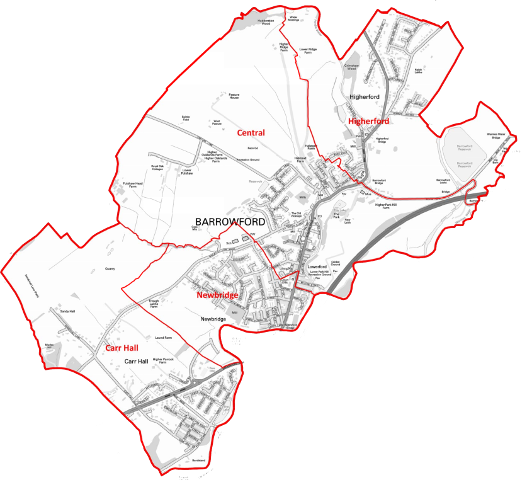What information does Barrowford Parish Council collect about me?
When you use Barrowford Parish Council's website, we may ask for personal information about you. This can consist of information such as your name or email address. Different webpages may ask for different personal information.
By entering your details in the fields requested, you enable Barrowford Parish Council to provide you with the services you select.
Please note that sometimes on particular webpages we will require you to provide additional personal information, and sometimes sensitive personal information. For example if you're submitting an application form for a job, we may ask about criminal convictions. When we do this we will specify further on these webpages why we are collecting your information and how we will use it.
How will Barrowford Parish Council use this information?
Barrowford Parish Council will only use personal information you send us for the purposes for which you provide it. For example if you have opted to get emails from us, we may contact you to request your opinion about specific issues or to inform you of new services.
When will Barrowford Parish Council contact me?
The parish council may contact you
- to inform you of new services or to ask for your opinions if you have opted to get emails from Barrowford Parish Council
- to provide you with updates when you have requested services from us
Will Barrowford Parish Council share my personal information with anyone else?
The county council will not pass your personal information on to any other parties, except where required to carry out our duties and functions as a local authority.
All employees and subsidiaries who may have access to your personal data are obliged to respect its confidentiality.
How long will Barrowford Parish Council keep my personal information?
The county council will only hold your information for as long as necessary for the purposes for which you provide the information to us.
What if I have a query or concern about personal data that Barrowford Parish Council holds about me?
If you have a query or concern, please contact:
For data security and protection matters, Barrowford Parish Council’s data protection officer on 01282 696349, or by email on This email address is being protected from spambots. You need JavaScript enabled to view it.
You can also write to:
Data Protection, Barrowford Parish Council, Holmefield House, Gisburn Road, Barrowford, Lancashire, BB9 8ND, England
Does Barrowford Parish Council collect information automatically when I visit the council's website?
In order to improve the council's online services, Barrowford Parish Council collects information about your visits to barrowford.org.uk (and it's alias barrowford.net). These statistics do not contain personal data and cannot be traced back to an individual.
We do not use cookies to store personal data and we don't link non-personal information stored in cookies with personal data about specific individuals.
What are cookies?
A cookie is a small piece of information that is placed on your computer by a website. Cookies do not damage your computer. They cannot be used to get information from your computer about you or read any personal material kept by you on your computer. You can find more information on how to delete and control cookies at http://www.allaboutcookies.org/faqs/cookie-file.html
Barrowford Parish Council does not use cookies to store personal data and we do not link non-personal information stored in cookies with personal data about specific individuals.
Barrowford Parish Council uses cookies for the purpose of rendering our website in your browser in a fully accessible format in order to comply with relevant disability legislation and industry standards.



















 The Parish of Barrowford, which includes Carr Hall and Higherford, has a population of just over six thousand people and over 2,750 households, which has been steadily increasing over a number of years. Barrowford is seen as a 'desirable' place to live, with a number of local estate agents and the pressure on available land for local house building confirms the popularity of the village as a place to settle. Although Barrowford and the surrounding Pendleside villages are seen to be more prosperous than some of the other larger local towns, the high cost of local housing and the reduction in local employment prospects are proving a serious challenge to young people wanting to stay in the village where they were brought up.
The Parish of Barrowford, which includes Carr Hall and Higherford, has a population of just over six thousand people and over 2,750 households, which has been steadily increasing over a number of years. Barrowford is seen as a 'desirable' place to live, with a number of local estate agents and the pressure on available land for local house building confirms the popularity of the village as a place to settle. Although Barrowford and the surrounding Pendleside villages are seen to be more prosperous than some of the other larger local towns, the high cost of local housing and the reduction in local employment prospects are proving a serious challenge to young people wanting to stay in the village where they were brought up.